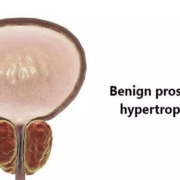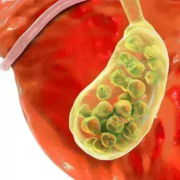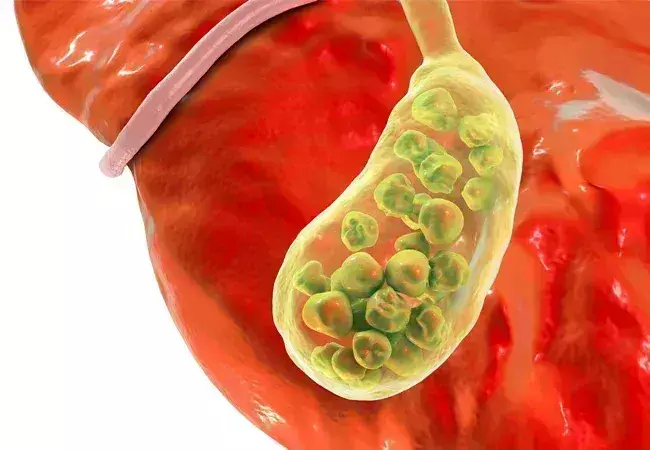More cancers may be treated with personalized therapies before surgery, suggests study

Breast, bladder, and pancreatic cancers are increasingly being treated with a broad range of therapies before a patient undergoes surgery, and cancer stage at diagnosis continues to be a leading factor in determining a person’s survival rate for all types of cancer, according to the first-ever annual cancer report from the National Cancer Database (NCDB) of the American College of Surgeons (ACS) Cancer Programs.
The findings were published this weekin the Journal of the American College of Surgeons (JACS).
The NCDB, a clinical oncology database jointly operated by the ACS and the American Cancer Society, captures hospital-based data on approximately 74% of all cancers diagnosed in the U.S. and is one of the most comprehensive cancer research databases.
“This report is our approach to making NCDB data more broadly available to others who may benefit from understanding this large source of cancer data and what it’s telling us about the current state of cancer diagnoses and treatments in the United States,” said first author Elizabeth B. Habermann, MPH, PhD, chair of the ACS Cancer Data Modeling Committee and a professor of health services research at Mayo Clinic in Rochester, Minnesota.
The report summarizes new observations and recent trends in cancer diagnoses, and includes many details not usually included in other cancer reports, the authors said. Some unique metrics tracked in NCDB data include length of stay, hospital readmission rates, and hospital type (such as a community or academic institution). These metrics help hospitals assess quality of care and inform treatment options for the growing number of cancer patients nationwide, the authors added.
The report focuses on 2021, the most recently available data from the NCDB at the time, and overall trends in cancer from 2004-2021.
Main Findings
- More cancers are being treated with targeted medical therapies before surgery: The use of neoadjuvant systemic therapy, which is usually given to patients before surgery or other primary cancer treatment, has increased for breast, urinary bladder, and pancreatic cancers, though it remains low for other cancers. Systemic therapies encompass a broad range of treatment options, including hormone therapy, immunotherapy, and chemotherapy, designed to reach cells throughout the body to hopefully shrink an existing tumor and prevent further spread. According to the report, the use of neoadjuvant systemic therapy, particularly hormone therapy, for breast cancer increased from 11% in 2010 to 18% in 2021 at Commission on Cancer (CoC) accredited sites. Substantial increases for neoadjuvant systematic therapy were also noted for pancreatic (224% increase) and urinary bladder (102% increase) cancers since 2010.Although there was a slight decrease in the use of systemic neoadjuvant therapy in 2021 in some cancers due to the pandemic, the authors said these trends show a sustained increase in the use of neoadjuvant systemic therapy for certain cancers.“One of the goals of neoadjuvant systemic therapy is to treat the cancer beforehand to hopefully decrease the size of the tumor and/or the lymph node involvement so that a less extensive surgery can be performed,” said Judy C. Boughey, MD, FACS, senior author of the JACS study and chair of the ACS Cancer Research Program.Dr. Boughey, who also serves as division chair of breast and melanoma surgical oncology at Mayo Clinic in Rochester, Minnesota, added that neoadjuvant systemic therapy may also inform recommendations regarding other cancer therapies after surgery based on how a patient’s tumor responds to the treatment received.
- Catching cancer earlier saves lives: Across all cancers, patients with earlier-stage (pre-cancers or stage I-II) cancers had the best outcomes and 5-year survival rate. Although not a new finding, the authors said this finding confirms that screening and early diagnosis continue to be essential factors for patients who are diagnosed with cancer.
- Women fare better than men: Overall five-year survival rate for all types of cancer in 2021 was 64%. When stratified by sex, women had a markedly better 5-year overall survival rate (68%) compared to men (59%) across all types of cancer analyzed in the report.
The report also describes in-depth data on three specific cancers-breast, colorectal, and pancreatic. The team selected these cancers due to their unique characteristics: colorectal and breast cancers are commonly diagnosed and treated with different kinds of surgery; pancreatic cancer is also treated with surgery but is rarer and has a very low survival rate.
- Early-stage breast cancer is on the rise: From 2004-2021, about 21% more women were diagnosed with early-stage (stage I) breast cancer, while rates of advanced-stage diagnoses (stage IV) declined overall by about 28%. Most patients who had breast surgery underwent lumpectomy (66%), and the majority of these women (81%) were also treated with radiation therapy. The use of hormone therapy treatment more than doubled from 3.3% in 2018 to 7.7% in 2020.Breast cancer, which was one of the most common cancers diagnosed at CoC sites, also had one of the highest survival rates compared to other cancers, especially for women diagnosed with earlier-stage breast cancer, according to the report. Women diagnosed with stage I breast cancer have about a 93% 5-year survival rate.
- Colon cancer is most commonly diagnosed at later stages: Nationwide, rates of colorectal cancer are rising among younger populations. The NCDB report found that colon cancer is one of the most common solid organ cancers diagnosed in both men and women, who were diagnosed at a median age of 68. Most commonly, patients were diagnosed with stage II or stage III colon cancer. About 81% of patients diagnosed with colon cancer underwent a colectomy, a surgery that involves removing all or part of the colon. The stage of diagnosis continues to be the most important determinant of long-term overall survival, with patients with stage IV colon cancer having about a 19% 5-year survival rate, according to the NCDB report, compared to about 82% for stage I or 72% for stage II colon cancers.
- Pancreatic cancer is often found too late: Pancreatic cancer continues to be diagnosed at later stages when outcomes are worse for patients; nearly half of patients had stage IV disease when diagnosed, though the NCDB report found a steady increase in patients diagnosed with stage I pancreatic cancer over the last two decades (from about 10% in 2004 to about 28% in 2021). There currently are no uniform guidelines on screening for pancreatic cancer, and symptoms do not often appear until the cancer has spread, making it more difficult to treat. Patients with pancreatic cancer tend to be older (median age 70) and the disease is slightly more common in men. However, the NCDB report also noted some encouraging trends in treatment options for pancreatic cancer: More patients with pancreatic cancer are being treated with chemotherapy and other therapies before having surgery, with the use of neoadjuvant systemic therapy increasing by more than 200% from 2010 to 2021.
The ACS Cancer Data Modeling Committee plans to release annual cancer reports, with a focus on broad cancer trends as well as in-depth data on three different cancers selected based on volume and/or mortality rate.
“The CoC is dedicated to improving care for all cancer patients. The CoC standards and quality metrics have been developed by multi-disciplinary experts in each cancer type and are based on evidence-based research,” said Ronald J. Weigel, MD, PhD, MBA, FACS, medical director of the ACS Cancer Programs and co-author of the JACS study. “Comprehensive datasets such as the National Cancer Database are imperative to better inform research and help us advance cancer treatment.”
Reference:
Habermann, Elizabeth B PhD, MPH1; Day, Courtney N MS2; Palis, Bryan E MA3; Plichta, Jennifer K MD FACS4; Wasif, Nabil MD, FACS5; Weigel, Ronald J MD, FACS, PhD, MBA6; Boughey, Judy C MD, FACS7. American College of Surgeons Cancer Programs Annual Report from 2021 Participant User File. Journal of the American College of Surgeons ():10.1097/XCS.0000000000001214, December 03, 2024. | DOI: 10.1097/XCS.0000000000001214
Powered by WPeMatico



















